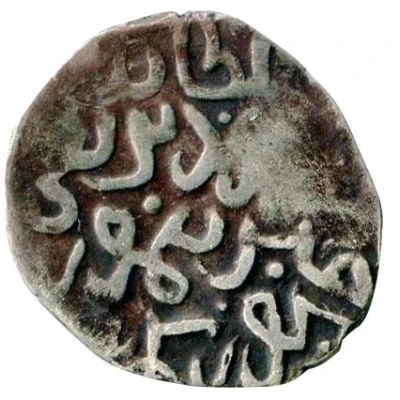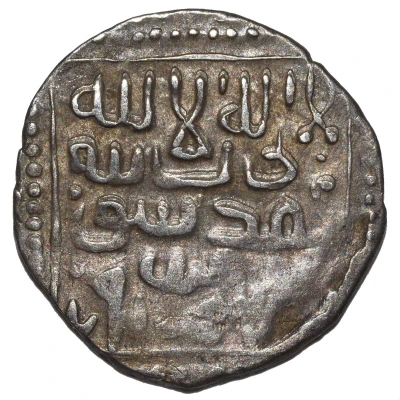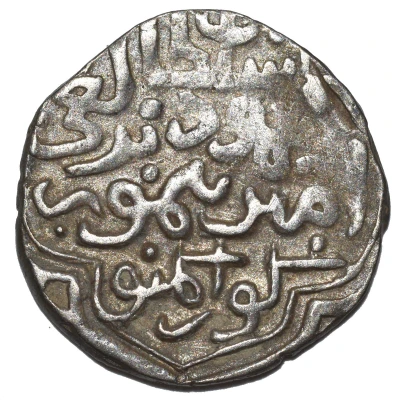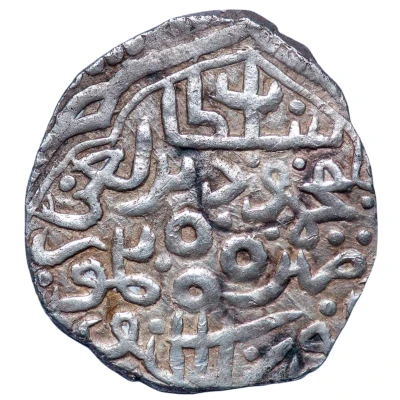
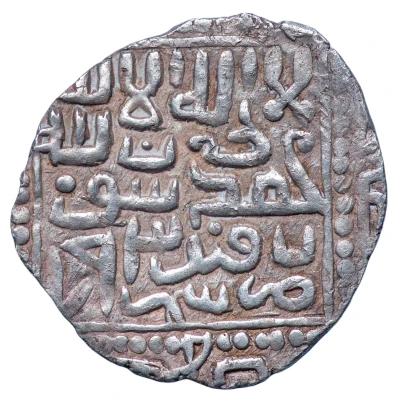

¼ Tanka - "Miri" - Timur citing Mahmud Khan during his lifetime Samarqand
| Silver | 1.5 g | 17 mm |
| Issuer | Timurid Empire (Mongol States) |
|---|---|
| Type | Standard circulation coin |
| Years | 790-799 (1388-1397) |
| Calendar | Islamic (Hijri) |
| Value | ¼ Tanka |
| Currency | Tanka (1370-1507) |
| Composition | Silver |
| Weight | 1.5 g |
| Diameter | 17 mm |
| Shape | Round (irregular) |
| Technique | Hammered |
| Orientation | Coin alignment ↑↓ |
| Demonetized | Yes |
| Updated | 2024-10-06 |
| Numista | N#407656 |
|---|---|
| Rarity index | 95% |
Reverse
Script: Arabic
Edge
Plain
Comment
According to Stephen Album, full tankas were not struck at Samarqand until after Timur’s death, during the reign of Khalil Sultan. This type is conventionally called dirham, but the actual name of this denomination is unknown, although recent evidence suggests that the denomination was known as miri, i.e., “of the amir”.
This coin was struck at Timur's capital, Samarkand.
** miri is also known as dirham which was equivalent to 1/4 tanka after reform
Notes:
Timur (Persian: تیمور Timūr, Chagatai: Temür, Uzbek: Temur; died 18 February 1405), historically known as Tamerlane (Persian: تيمور لنگ Timūr(-e) Lang, "Timur the Lame"), was a Turko-Mongol conqueror and the founder of the Timurid dynasty in Central Asia. Born into the Barlas confederation in Transoxiana during the 1320s or 1330s, he gained control of Western Chagatai Khanate by 1370. From that base, he led military campaigns across West, South and Central Asia and emerged as the most powerful ruler in the Muslim world after defeating the Mamluks of Egypt and Syria, the emerging Ottoman Empire and the declining Sultanate of Delhi. From these conquests he founded the Timurid Empire, although it fragmented shortly after his death. He is considered the last of the great nomadic conquerors of the Eurasian steppe, and his empire set the stage for rise of the more structured and lasting gunpowder empires in the 1500s and 1600s. Quoted from:
http://en.wikipedia.org/wiki/Timur
Interesting fact
One interesting fact about this coin is that it features an inscription in the Mongolian language, which was a departure from the traditional Arabic script used on coins in the Islamic world. This reflects the influence of the Mongol Empire on the Timurid Empire, which was founded by Timur (also known as Tamerlane), a Mongol emperor who sought to revive the Mongol Empire's power and culture. The use of Mongolian on the coinage was a way to assert the empire's identity and distinguish it from other Islamic states of the time.

